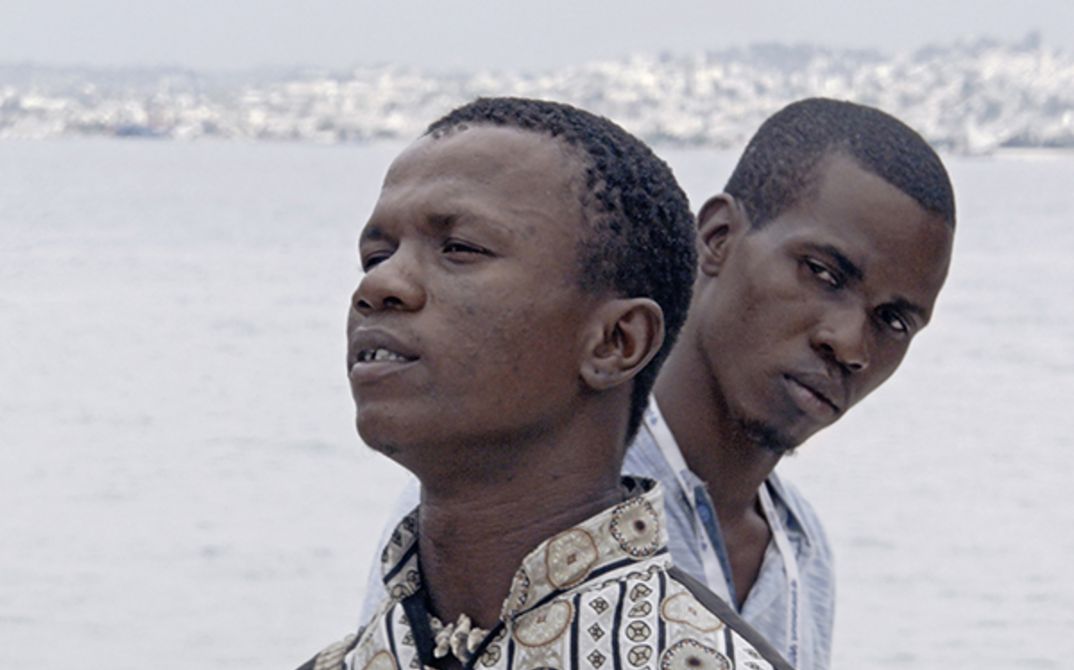Towards a Creole form of cinema
OUVERTURES began with Louis Henderson’s interest in exploring the pertinence of the revolutionary spirit of Toussaint Louverture in present-day Haiti – a country that has faced many political crises since its independence from French enslavement in 1804. The process of independence began in 1791 with a famous vodou ritual in the forest of Bois Cayman in the north of the country. The enslaved people rose up against the French and twelve years of struggle followed, resulting in the creation of the first Black Republic in the Americas. The Haitian Revolution was described by CLR James as “…the only successful slave revolt in history” and has also been considered the apogee of Enlightenment ideals of freedom and human rights in the 18th century.
Since that period, Haiti has suffered various catastrophes, such as an American military occupation, violent dictatorships, economic and natural disasters, the last of which being the earthquake of 2010 that killed up to 280,000 people. Haiti has never stopped paying the price of its victory over the imperial French army of Napoleon, it has been in a state of gradual chaos due to a slow form of re-colonisation by Western powers.
Therefore, to speak about the history of Toussaint Louverture and the revolutionary pantheon, while Haiti is on the verge of collapse, might seem incongruous. But the spirit of this unique revolution remains very much alive in the minds and bodies of a youth whose only offer of a potential future is the chance of escape.
Some of these youths constitute the group of young writers and actors whom producer Louis Henderson and writer Olivier Marboeuf met in 2017. Together they created “The Living and the Dead Ensemble”, and helped transform OUVERTURES into a choral and polyphonic film about the ghost of Louverture haunting Port-au-Prince in the present.
The spiral as central motif of Haitian culture
Originally, the film set out to document the work of a group of actors who had decided to adapt and translate, from French to Haitian Creole, the play “Monsieur Toussaint” by Martiniquan poet and philosopher Édouard Glissant. Based on a documentary method, they developed a process of fiction writing that uses improvisation and “staged” conversations to create a kind of free improvisational cinema. Gradually, the narrative became one about a community in movement, in migration, looking for a future elsewhere, promised through a new kind of exile based upon Haitian history and imagination.
The crossing of the Atlantic Ocean – made first in one direction by slave ships, and then later the other way by Toussaint Louverture when exiled to France by Napoleon – continues in this story as a history of return in the form of a spiral. The shape of the spiral is a central motif of Haitian culture and Caribbean culture in general. It has its origins in Creole orality (from storytelling to conversation) where each tale is created from repetition and variation, and where language is created as a means of escaping colonial surveillance. The spiral is thus a way of finding a path towards emancipation through cunning, like maroon slaves who invented routes and ways to escape from violent and hostile spaces, ways to invent their life and forge a new humanity.
A new relationship with the world
As an image of a world rooted in the chaos produced by slavery, the spiral also represents a way of escaping the illusion of a linear history produced by the West. OUVERTURES is a first attempt towards a Creole form of cinema where time and space are turned upside down, where places connect beyond geography. From Édouard Glissant to the great Haitian poet Frankétienne – and thus to the authors of the Spiraliste literary movement – a central theme is the invention of a new language and a new relationship with the world stemming from the chaotic experience of the Caribbean. This language could well be that of our globalised world on the brink of climate chaos.
Through a process of collective writing and fiction, The Living and the Dead Ensemble attempt to flee the anthropological gaze so often cast on societies from the global South, and as such they flee the folkloric clichés of Haiti that create images in the minds of Western artists and filmmakers. OUVERTURES is therefore not a film about Haitians, but a film made with Haitians. The people who make up this film are not the fantasised subjects of an individual author, they are the actors within a narrative of which they take charge, deciding how it can be told and how it must exist. (The Living and the Dead)
